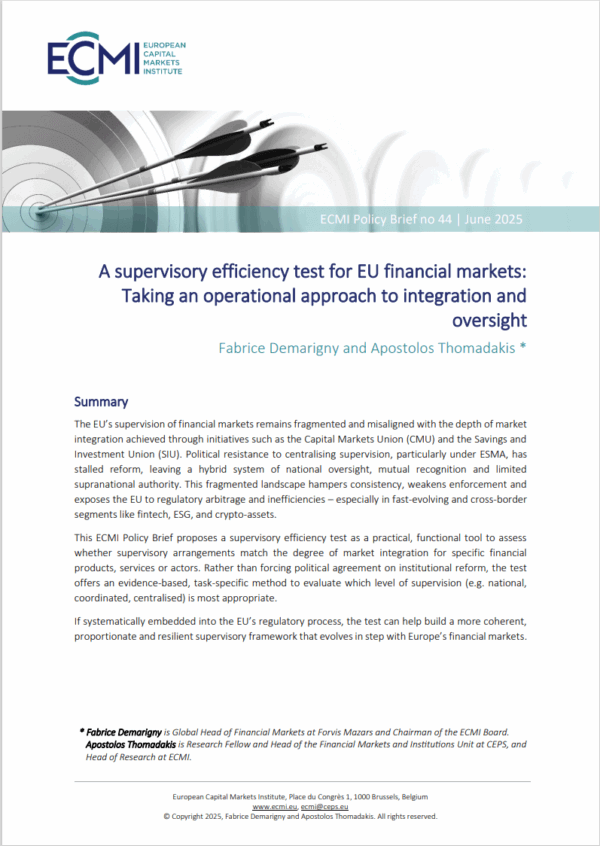Eight years have now passed since the start of the financial crisis. The subsequent Great Recession moved Central Banks to slash interest rates and employ unconventional monetary policy tools to ward off deflationary pressures. The ECB has maintained its main policy rate below 1% since July 2012, and since March 2014 it went below the zero for the rate on the deposit facility. In March 2015, the ECB started a large asset purchase programme (APP) as it felt that it could no longer lower rates. Are the APP and the extraordinarily low interest rate still appropriate, given the current average macro-economic environment in the euro area?
The ECB’s mandate is price stability, which is defined as an inflation rate that is below but close to 2%. The benchmark indicator for inflation is the HICP (Harmonised Index of Consumer Prices). Over the past three years the headline inflation rate has gone up and down, with the oil price recently creeping up to nearly 2% (see Figure 1). But this has changed since the oil price has stabilised. Core inflation, which excludes changes in energy prices and unprocessed food, has been less volatile, at an average of 1.2% since 2008. The latest value for core inflation for May is 0.93%, slightly lower than the April high of 1.24%.[1]
As argued in Alcidi et al. (2016), in economies labouring under a high debt burden consumer price indicators are not the best measure of how inflation or deflation affects the economy. We propose a return to the classic GDP deflator, which measures the difference between nominal and real GDP. This is a broader indicator that captures changes in prices related to production and changes in incomes as it is not affected by taxes or input (e.g. oil) price movements (for a more detailed explanation, see CEPS Special Report). The advantage of the GDP deflator is that it better measures the extent to which debtors might be burdened by falling prices. Of course, this does not mean that the ECB should change its benchmark inflation measure, but if sustainability of debt burden in real terms is the ECB’s main concern in a low inflation environment, HICP is not the right indicator to consider.
While the headline inflation rate has been volatile due to shifts in energy prices, the core inflation and GDP deflator have moved closer together, with the GDP measure being more stable than core inflation, since even core inflation contains some raw material prices[2] (see Figure 1).
Figure 1. Contrasting various inflation measures for the eurozone

Note: HICP inflation rates for 2017 based on the average inflation rate of the first five months of 2017.
Sources: AMECO and Eurostat.
One of the cornerstones of monetary policy calibration is the so-called Taylor rule, which describes the ‘optimal’ interest policy rate setting in terms of deviations of the inflation rate from the target rate, the output gap and the equilibrium real interest rate:

A key problem with the application of the Taylor rule is that both the long-term real equilibrium rate and the output gap must be estimated. We assume, in line with most of the literature, that the real interest rate was 2% before the crisis, but dropped to 1% once the recession hit. The output gap is estimated frequently by the European Commission, but these estimates tend to be revised, even radically, over time. During the boom years, up to 2008, the Commission’s estimates (along with those of most other analysts) put growth potential very high, thus producing low (but still positive) output gaps before the crisis. These figures were subsequently revised in light of the slow growth since 2009, which suggested a much lower potential. We thus present two estimates for the Taylor rule policy rate: one with the output gap as it was reported at the time when the policy decision was to be taken and another one with the output gap as it is reported today.
With these assumptions, we find that for the ECB the Taylor rule would have prescribed a higher interest rate prior to the crisis and thereafter a much faster and deeper decline (see Figure 2). According to the Taylor rule, based on ex post data, 2015 would have been the point in time when the ECB should have started to raise the interest rate. In reality, this is when the ECB did the opposite by loosening further monetary conditions through its massive bond purchase programme.
CEPII (2016) translates the impact of the bond purchases into an equivalent measure of policy easing, by estimating the so-called shadow interest rate; namely the policy rate without a zero bound that the ECB would have had to adopt to achieve the same monetary conditions as it did with the quantitative easing (QE) effects. They find that the shadow rate would have dropped below -3%. The ECB has thus followed the opposite direction of the trend suggested by the Taylor rule.
For 2016, both ex ante and real-time data[3] would have called for an increase of its interest rate. Using the output gap and the GDP deflator as provided by the European Commission forecasts for 2017, the rule’s predicted policy rate points to a further increase led by another narrowing of the output gap[4] and a rise in the deflator.
Figure 2. The Taylor rule for the eurozone

Note: Inflation rate based on GDP deflator. The equilibrium rate for the pre-crisis period up to 2009 is set at 2% and thereafter at 1%, oriented along the potential growth rate over these periods.
Sources: AMECO, ECB and Eurostat.
It is difficult to compare the policy rate suggested by the Taylor rule to actual rates in the presence of unconventional policy measures that are currently in place. This result should be taken as an indication of a move towards the normalisation of monetary policy conditions, in response to signals of persistent improvement in macroeconomic conditions.
Until now, the ECB has placed limited weight on signals from macroeconomic fundamentals, other than consumer inflation, and has argued that the observed macroeconomic improvements rely on policy support. This argument is steadily losing traction as the recovery in the euro solidifies and persists. The present combination of negative rates plus asset purchases is becoming increasingly difficult to justify. On present trends, even Mario Draghi’s strict four prerequisites[5] for a change in monetary policy – all based exclusively on consumer price inflation – might soon be met.
The time has come to prepare for an exit from unconventional policies that are no longer needed, given the absence of any signs of deflation.
Cinzia Alcidi is a Senior Research Fellow and Head of Economic Policy Unit at CEPS; Matthias Busse is a Researcher in the Economic Policy research unit at CEPS; and Daniel Gros is Director at CEPS.
References
Alcidi, C., M. Busse and D. Gros (2016), “Is there a need for additional monetary stimulus? Insights from the original Taylor Rule”, CEPS Policy Brief No. 342 (https://www.ceps.eu/
publications/there-need-additional-monetary-stimulus-insights-original-taylor-rule).
European Commission (2017), “AMECO database” (http://ec.europa.eu/economy_finance/
ameco/user/serie/SelectSerie.cfm).
Eurostat (2015), “HICP Methodology” (http://ec.europa.eu/eurostat/statistics-explained/index.php/HICP_methodology).
CEPII (2016), “Through the lenses of the natural rate of interest, European monetary policy appears to be too loose since 2015” (http://www.cepii.fr/blog/en/post.asp?IDcommunique
=469).
[1] This stark increase may be partly attributed to the calendar effects of late Easter holidays.
[2] Eurostat, 2015.
[3] Real-time data gives a more realistic assessment of past interest rate settings, as policymakers have to make decisions based on the data available at the time.
[4] The output gap is estimated to decrease to only slightly above balance (-0.6%) in 2017 and to close entirely in 2018.
[5] The four prerequisites are: i) a persistent rise in inflation, ii) a rise in inflation expectations, iii) it applies to the eurozone average, not individual member states and iv) inflation should hold up without unconventional measures.












